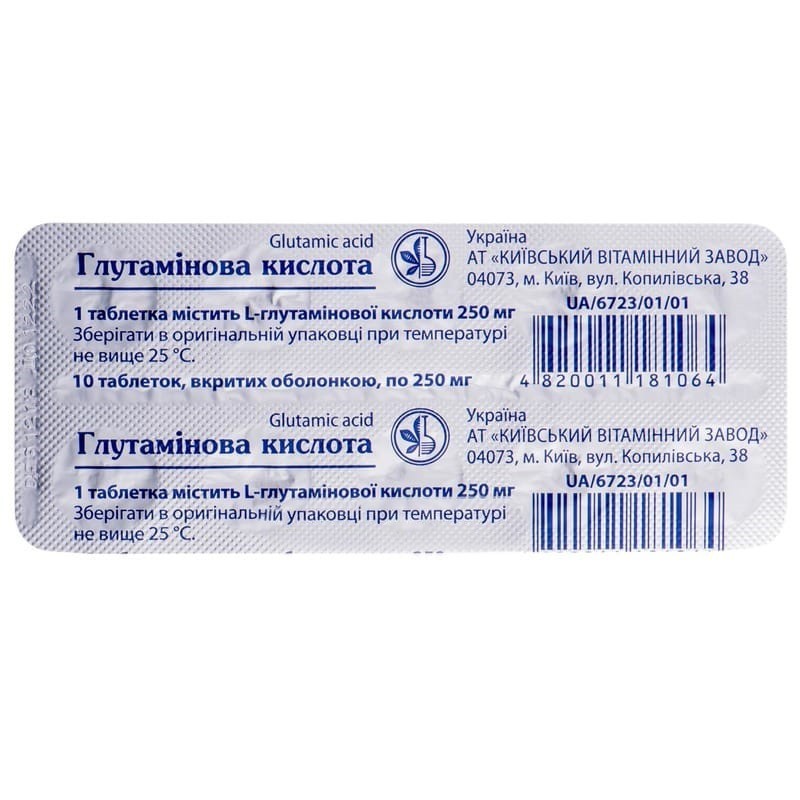



 Secure and encrypted payment processing
Secure and encrypted payment processing We ship to over 40 countries including the USA, UK, Europe, Australia and Japan
We ship to over 40 countries including the USA, UK, Europe, Australia and Japan Guaranteed refund or reship if you haven't received your order
Guaranteed refund or reship if you haven't received your orderinterchangeable amino acid, which is involved in the processes of transamination of amino acids in the body, in protein and carbohydrate metabolism, stimulates oxidative processes, helps neutralize and remove ammonia from the body, and increases the bodys resistance to hypoxia. promotes the synthesis of acetylcholine and atph, the transfer of potassium ions, plays an important role in the activity of skeletal muscles. glutamic acid refers to neurotransmitter amino acids that stimulate the transmission of excitation in the synapses of the central nervous system.
Pharmacokinetics Glutamic acid is well absorbed when taken orally. It is rapidly eliminated from the blood, accumulating mainly in muscle and nervous tissues, in the liver and kidneys, and penetrates the BBB and cell membranes. Partially glutamic acid during absorption is re-aminated to the formation of alanine. Under the influence of the enzyme glutamate decarboxylase, it is transformed in the brain into a mediator - gamma-aminobutyric acid. About 4-7% of it is excreted in the urine unchanged, the rest is utilized in the process of metabolic transformations.
Epilepsy, mainly minor seizures with equivalents, somatogenic, involutional, intoxication psychoses, reactive states with symptoms of depression, exhaustion, mental retardation in children, Downs disease, cerebral palsy, poliomyelitis (acute and recovery periods), progressive myopathy (in the composition combination therapy), to eliminate and prevent the neurotoxic effects caused by isonicotinic acid hydrazide preparations.
Adults are prescribed in a dose of 1 g 2-3 times a day. single doses for children are: at the age of 3–6 years - 250 mg, 7–9 years - 0.5–1 g; 10 years and older - 1 g. Multiplicity of admission - 2-3 times a day.
With oligophrenia, 100-200 mg / kg of the patient’s body weight for several months. Accepted for 15-30 minutes before eating, with the development of dyspeptic phenomena - during or after eating. The course of treatment is from 1-2 to 6-12 months.
Fever, irritability, pronounced psychotic reactions, hepatic and / or renal failure, nephrotic syndrome, peptic ulcer of the stomach and duodenum, diseases of the blood, anemia, leukopenia.
On the part of the blood and lymphatic system: a decrease in hemoglobin, leukopenia.
From the digestive tract: vomiting, diarrhea.
From the nervous system: headache, increased irritability, insomnia.
From the immune system: allergic reactions, including skin rashes, itching, hyperemia.
During treatment, it is necessary to systematically conduct a study of urine and blood. if side effects occur, a dose reduction is recommended. glutamic acid is also used to eliminate neurotoxic phenomena associated with taking other drugs.
After taking Glutamic acid, rinse your mouth with a weak solution of sodium bicarbonate. The drug contains sugar, which must be considered for patients with diabetes mellitus.
Use during pregnancy and lactation. This medicine should not be used during pregnancy or lactation.
Children. The drug is not used in children under the age of 3 years.
The ability to influence the reaction rate when driving vehicles or working with other mechanisms. Given the possible effect of the drug on the nervous system, the drug should be used with caution when driving vehicles or working with other mechanisms.
In combination with thiamine and pyridoxine, glutamic acid is used to prevent and treat neurotoxic phenomena caused by isonicotinic acid hydrazide preparations (isoniazid, phtivazide, etc.). with myopia and muscular dystrophy, glutamic acid is more effective in combination with pachycarpine or glycocol.
Perhaps an increase in the manifestations of adverse reactions.
Treatment: symptomatic therapy, gastric lavage, use of enterosorbents.
At a temperature not exceeding 25 ° C.